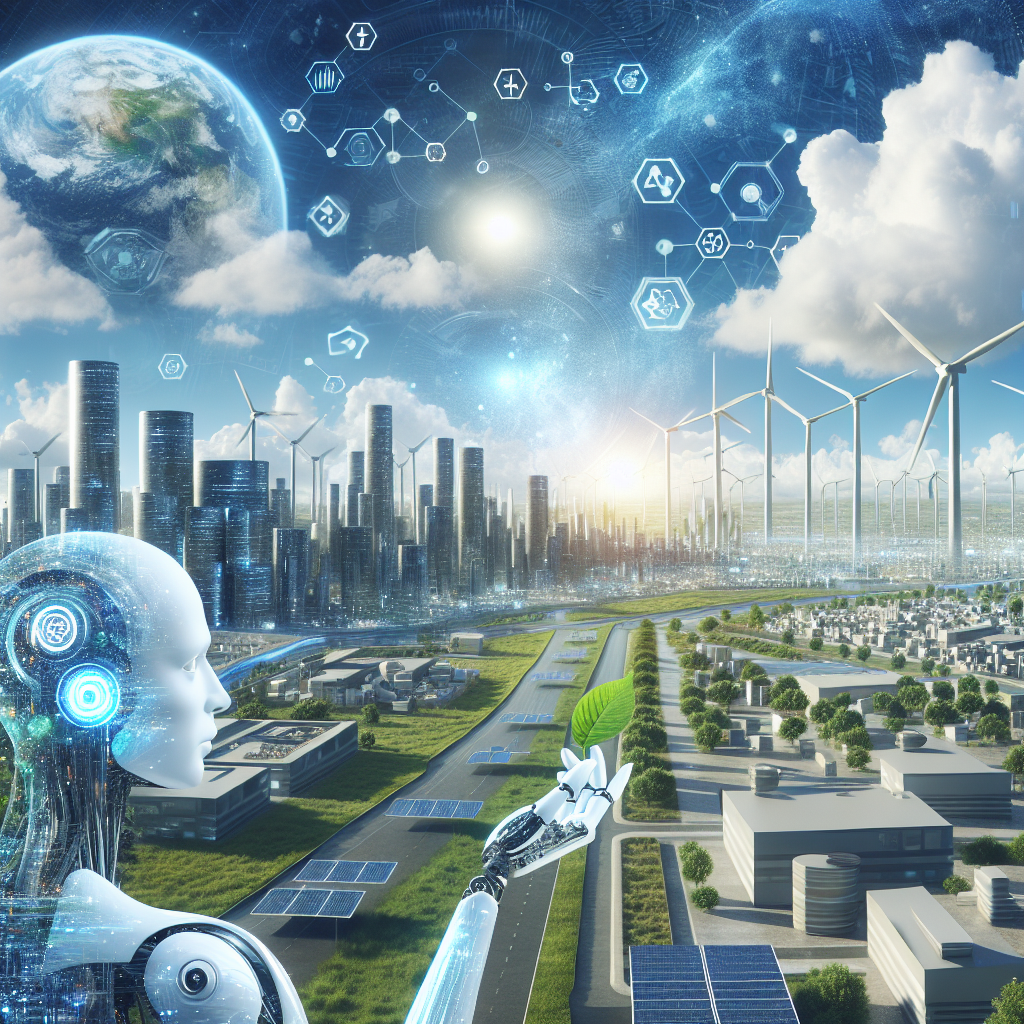As the global climate crisis continues to escalate, the need for effective and innovative solutions to mitigate its impact is becoming increasingly urgent. One such solution that has been gaining traction in recent years is the use of artificial intelligence (AI) technology. AI has the potential to revolutionize the way we approach climate change mitigation by providing valuable insights, optimizing processes, and driving innovation in various sectors. In this article, we will explore the contribution of AI to climate change mitigation and how it can help address one of the most pressing challenges facing our planet.
AI’s Contribution to Climate Change Mitigation
1. Predictive Analytics: One of the key ways in which AI can help mitigate climate change is through its ability to analyze vast amounts of data and make predictions about future climate trends. By using machine learning algorithms, AI can analyze historical data on weather patterns, greenhouse gas emissions, and other relevant factors to forecast potential climate impacts. This information can help policymakers, businesses, and individuals make informed decisions about how to adapt to and mitigate the effects of climate change.
2. Energy Efficiency: AI can also play a crucial role in improving energy efficiency, which is essential for reducing greenhouse gas emissions. By using AI-powered systems to optimize energy use in buildings, transportation, and industrial processes, we can significantly reduce our carbon footprint. For example, AI can help automate energy management systems, optimize heating and cooling processes, and identify opportunities for energy conservation. This can lead to substantial energy savings and lower emissions.
3. Renewable Energy: AI is also being used to maximize the efficiency of renewable energy sources such as solar and wind power. By using AI algorithms to predict weather patterns and optimize the operation of renewable energy systems, we can increase their output and reduce the reliance on fossil fuels. AI can also help integrate renewable energy sources into the grid more effectively, balancing supply and demand and reducing the need for backup power sources.
4. Agriculture and Land Use: AI technology can also help address climate change by improving agricultural practices and land use. By using AI-powered tools to analyze soil quality, crop yields, and weather patterns, farmers can make more informed decisions about when and how to plant crops, use fertilizers, and manage water resources. This can lead to higher yields, reduced waste, and lower emissions from agriculture. AI can also be used to monitor deforestation, identify illegal logging activities, and promote sustainable land management practices.
5. Carbon Capture and Storage: Another area where AI can make a significant impact on climate change mitigation is in carbon capture and storage (CCS) technologies. AI can help optimize the design and operation of CCS systems, making them more efficient and cost-effective. By using AI algorithms to analyze data from CCS projects, researchers can identify ways to improve the capture and storage of carbon dioxide emissions from power plants and industrial facilities.
Frequently Asked Questions (FAQs)
Q: How can AI help reduce greenhouse gas emissions?
A: AI can help reduce greenhouse gas emissions by improving energy efficiency, optimizing renewable energy systems, and promoting sustainable practices in agriculture and land use. By using AI technology to analyze data and make informed decisions, we can significantly reduce our carbon footprint.
Q: What are some examples of AI applications in climate change mitigation?
A: Some examples of AI applications in climate change mitigation include predictive analytics for weather forecasting, energy management systems for buildings, optimization of renewable energy sources, and monitoring of deforestation and land use changes.
Q: Can AI technology solve the climate crisis on its own?
A: While AI technology has the potential to make a significant contribution to climate change mitigation, it is not a silver bullet solution. Addressing the climate crisis requires a holistic approach that involves policy changes, technological innovations, and changes in behavior at all levels of society.
Q: How can individuals contribute to climate change mitigation using AI?
A: Individuals can contribute to climate change mitigation using AI by making sustainable choices in their daily lives, supporting organizations and initiatives that use AI for environmental purposes, and advocating for policies that promote the use of AI technology for climate action.
In conclusion, AI technology has the potential to play a crucial role in mitigating the impacts of climate change. By leveraging the power of AI to analyze data, optimize processes, and drive innovation, we can make significant progress towards a more sustainable and resilient future. However, it is important to remember that AI is just one tool in the toolbox of climate change mitigation, and that a comprehensive approach is needed to address this complex and multifaceted challenge. By working together and harnessing the potential of AI technology, we can create a more sustainable world for future generations.

